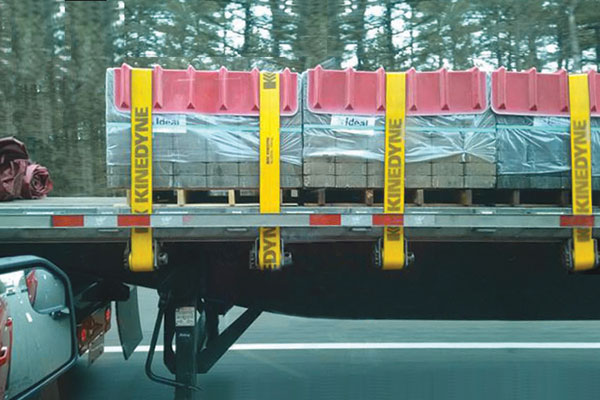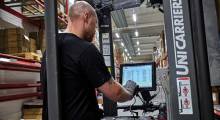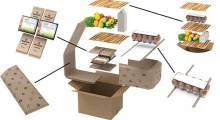Lighter in weight, easier to store and easier to toss over cargo, webbed containment straps have become the preferred medium for securing loads transported on flatbed trailers, replacing chain. As not all straps are created equal, however, it’s critical to select the one that best matches the load. That requires careful consideration of the cargo’s unique characteristics, as well as an understanding of the forces of inertia and gravity, explains Jeff Luick, northeast account executive at Kinedyne.
To help customers select the right type and comply with Federal Motor Carrier Regulations, Luick starts with the load. “We look at the specific working load limit (WLL) required to hold that cargo in place, based on its weight, when the load is in transit,” he says. “The securement is manufactured to create the appropriate amount of friction required to hold the load in place, preventing it from moving or falling off the trailer.”
Kinedyne’s winch and ratchet securement straps come in three tiers of strength and durability. The recently introduced K-Force line and improved Rhino Max lines were developed for loads in excess of the company’s standard gold straps. As winch straps, both have working load limits of 6,670 pounds (23% greater than the current 5,400-pound industry standard); as ratchet straps, they have a WLL of 4,000 pounds (20% greater than the current 3,335-pound industry standard).
“Their higher WLL means fewer straps can be used to secure heavier loads,” notes Luick.
Further, the surface of the load is evaluated. “Palletized brick or concrete blocks are extremely abrasive; so is fresh-cut lumber,” he explains. “In those cases, we recommend Rhino Max straps, which have a special coating that resists abrasions. Should the coating become compromised, their webbing’s high-tensile strength minimizes the risk of failure.”
Alternately, for loads with the potential to be damaged by tie down forces—such as drywall or shingles—the company’s VeeBoard corner protectors can be added. This deflects the force and prevents the damage. “In that instance, the K-Force straps would work with the corner protection,” adds Luick
Article topics









